You may not realize it, but your upper body is involved in most of your daily activities. Whether it’s reaching for an item on a high shelf, getting dressed, or pushing open a door, these tasks all require a degree of mobility in your shoulders, neck, and upper back. Limited upper body mobility can make these activities difficult and painful. Upper body mobility exercises can help you achieve full upper body mobility, allowing you to move freely, reduce pain, and enhance performance in daily activities and workouts. This article will help you get started.
Pliability’s approach to mobility training can help you reach your goals and reclaim your upper body. Their easy-to-use mobility app includes guided routines and videos from professional athletes and trainers to help you achieve long-term flexibility and performance goals.
What Is Upper Body Mobility?
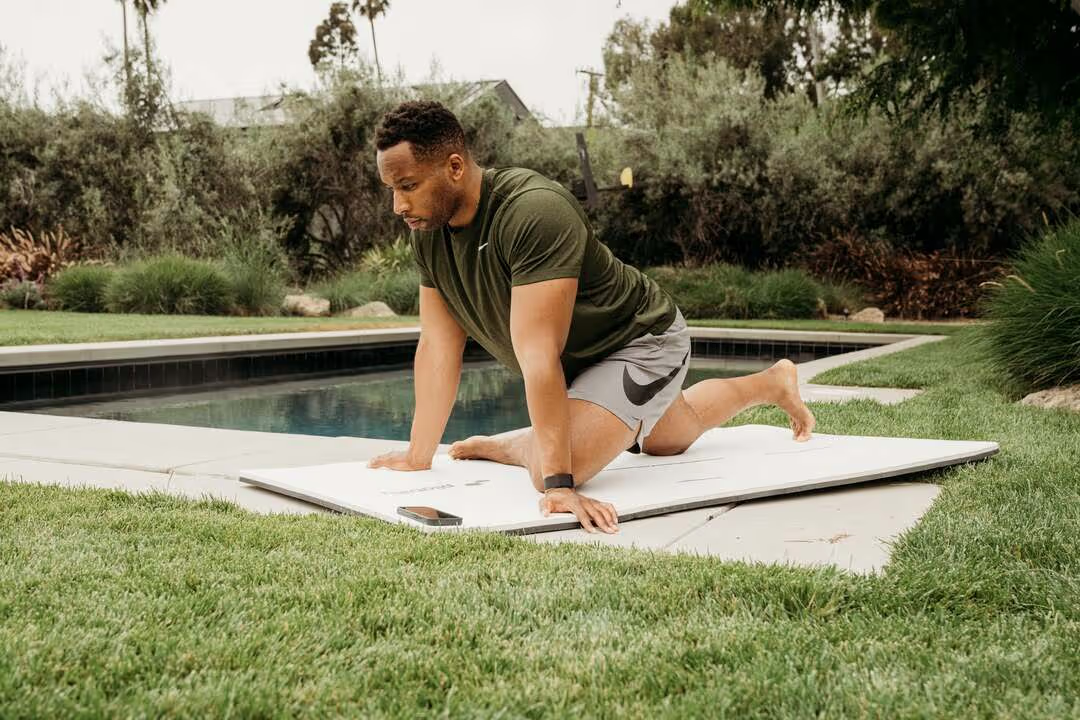
Upper body mobility refers to the ability of joints in the upper body to move through their full range of motion. The upper body is made up of everything above the waist, including the:
- Abs
- Back
- Chest
- Arms
- Shoulders
- Neck
It includes many joints, both mobile and fixed. The key areas of upper body mobility are your shoulders, chest, and upper back (thoracic spine). Over time, a lack of upper body mobility can impair your quality of life. If we don't prioritize it, our joints can feel creaky and painful, and we lose the ability to do:
- Daily activities
- Our favorite exercises
Avoid Aging Consequences
A mobility routine with upper body mobility exercises can help you avoid these consequences and stay functionally fit as you age.
Mobility vs. Flexibility: What's the Difference?
While frequently confused, flexibility and mobility are different, and the difference matters. Flexibility refers to the ability of a muscle to be:
- Temporarily
- Passively lengthened
Mobility refers to a joint's ability to move actively through its full range of motion. It is a more important concept in real life because when we run, jump, pull, push, or press, for instance, we rely on the active recruitment of our muscles to pull on our bones, assisted by tendons and ligaments to create movement.
Healthy Joint Movement
We need our muscles to have some measure of flexibility but need equal parts joint mobility and muscle activation to get anywhere. Put another way, mobility equals flexibility plus strength plus stability. Our joints must be mobile, strong, and stable to:
- Prevent injury
- Enjoy healthy movement
Related Reading
- Ankle Mobility Exercises
- Shoulder Mobility Exercises
- Hip Mobility Exercises
- How To Improve Flexibility
- Thoracic Mobility Exercises
- Stretch Before Or After Workout
- Wrist Mobility Exercises
- Mobility Exercises For Beginners
- Best Stretching Routine
- Back Mobility Exercises
- Lower Body Mobility Exercises
- Leg Mobility Exercises
- Mobility Exercises For Athletes
5 Common Upper Body Mobility Concerns

1. Pain: The Big Issue in Upper Body Mobility
Musculoskeletal pain is a prevalent diagnosis for adults, and the most affected areas of the upper body involve the:
- Back
- Soulders
Pain is one of the most common causes of limited mobility, and it can be incredibly debilitating when it affects upper body function. Low back pain is widespread, and up to 80% of adults will experience a painful episode at some point in their lives.
Chronic Pain Risk
Worse still, for an unlucky 12%, that low back pain will become chronic. Pain in the shoulder is also widespread and can be even more persistent. One study published in the BMC Musculoskeletal Disorders journal found that 50% of people who reported shoulder pain had it six months later.
2. Limited Range of Motion: Stiffness and Upper Body Function
When we experience pain, our body often compensates by attempting to minimize it as much as possible. In the case of joint pain, our body often increases muscular stiffness, which limits our range of motion.
This can lead to a feedback loop of feeling pain and then feeling tight, significantly reducing the likelihood of us getting up and moving, making the whole process worse.
3. Impingement: When Movement Hurts
A poorly positioned humerus bone in the shoulder socket impinges on the tendons and bursa in the shoulder. The constant rubbing from arm movement aggravates the shoulder region, including the rotator cuff. This leads to inflammation in the area and can cause bursitis or tendonitis.
Shoulder Impingement Risk
Overhead reaching is a movement highly affected by impingement, and if a client is experiencing pain and muscle weakness while performing this motion, they could have shoulder impingement. As fitness professionals, we must address the issues immediately to avoid further shoulder mobility issues.
Unaddressed shoulder impingement can cause a rotator cuff tear from the constant grinding of the humerus bone on the tendons.
4. Torn Rotator Cuff: A Painful Injury That Can Limit Mobility
If your client develops a rotator cuff tear, they will be in much more pain and experience immense movement dysfunction. The rotator cuff's key role is to stabilize the shoulder joint. It helps keep the humerus in the shoulder socket.
Four muscles make up the rotator cuff:
- Supraspinatus
- Infraspinatus
- Teres minor
- Subscapularis
Rotator Cuff Tears
If your client initially has a partial tear of the tendon, they should not continue to put any load on their shoulder.
This could cause a complete tear. Degeneration of the shoulder through repetitive stress is the most common cause of a rotator cuff tear. This muscle group's constant wear and tear causes it to deteriorate enough.
5. Frozen Shoulder: An All Too Common Injury
Frozen shoulder usually develops in individuals recovering from an injury or surgery. It causes stiffness and pain, creating more difficulty in joint motion. This is a result of non-use of the shoulder.
Being proactive in rehab and understanding the right phases to start stretching and strengthening the area will help avoid creating more mobility issues within your clients.
Pliability Mobility App
If you're feeling limited by pain or your ability to move, Pliability aims to complement your fitness routine and help you move better.
Sign up today to get 7 days absolutely for free on iPhone, iPad, Android, or our website to improve flexibility, aid recovery, reduce pain, and enhance range of motion with our mobility app.
4 Common Causes of Poor Upper Body Mobility
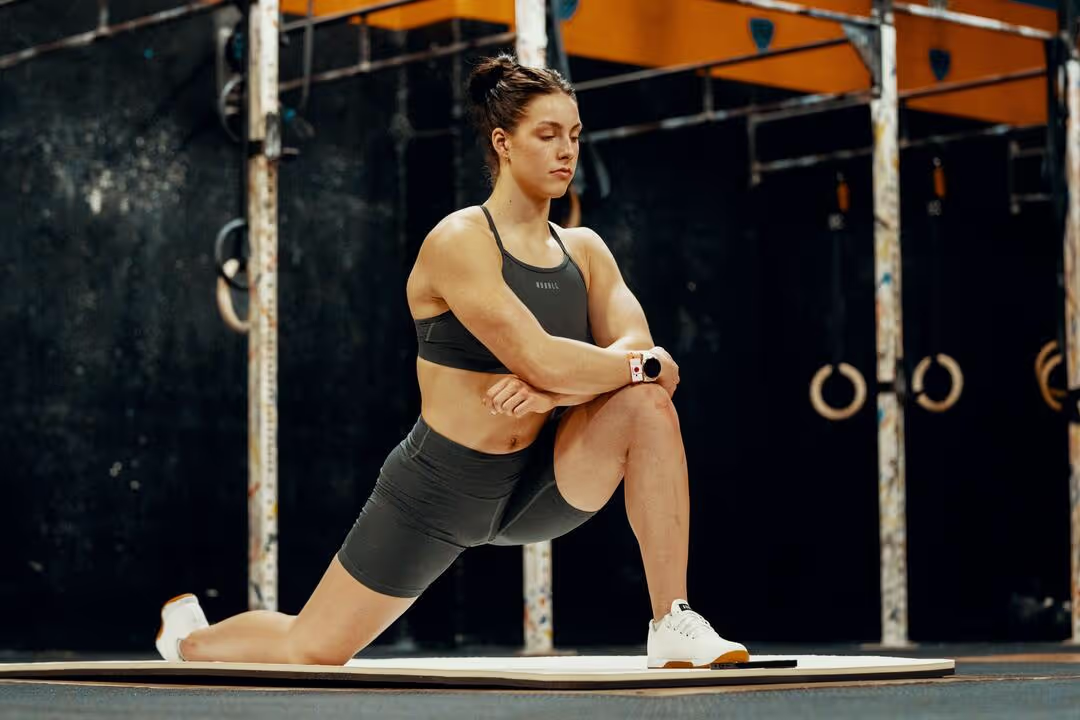
1. Force Coupling: The Unseen Hero of Upper Body Mobility
Force coupling is vital for keeping the shoulder joint versatile. When two equal and opposite forces act upon one another, they create rotational movement. As one muscle works to move, another is acting against it to stabilize the shoulder.
Poor mobility can result from unequal forces pulling against one another. This leads to muscle imbalances that are amplified by:
- Lifestyle activities
- Posture
- Exercise
The scapula, one of the three bones of the shoulder, is essentially a floating bone. It plays a vital role in stabilizing the shoulder and allowing free movement in the joint.
For this bone to allow for rotational movement, the trapezius and serratus anterior pull against each other. Knowing this information can help you pinpoint client problem areas more efficiently.
2. Inactivity: The Silent Killer of Shoulder Mobility
One of the most common causes of poor shoulder mobility is inactivity, not actual movement. A frozen shoulder is always a concern due to inactivity. Being the most mobile joint in the human body, the shoulder highly desires to move often.
Flexibility only remains through unrestricted movement. If your client is inactive for a prolonged period, this can restrict their movement. If connective tissue becomes tight or weak, the stability and flexibility of the shoulder joint decrease.
Frozen Shoulder Risk
Even though stiffness and pain develop from inactivity, a frozen shoulder is still much more common in those recovering from an injury or surgery. A medical condition that causes adhesive capsulitis usually severely limits arm and shoulder joint movement.
The shoulder capsule will thicken and tighten with a frozen shoulder, giving it its name of adhesive capsulitis.
3. Poor Posture: The Mobility Killer You Can't Ignore
Poor posture contributes to impingement issues due to internal rotation of the shoulders. With internal rotation, the humerus bone tilts and sits improperly in the shoulder socket. A client could experience aggravation to the tendons upon movement with this positioning.
This creates inflammation within the connective tissue, causing shoulder pain. Focusing on fixing forward posture in your clientele can help avoid impingement and, more importantly, internal rotation of the shoulders. If your client begins to experience inflammation in the shoulder, bursitis or tendonitis could be present.
4. Lack of Stability: Strength Is Your Shoulder’s Best Friend
A client's shoulder is often unstable due to a lack of strength and flexibility. Many exercise movements use the shoulder, so you need to ensure it is solid and stable. This is important because exercise comes with an increased load in addition to the client's original movement dysfunction. Improper technique can compromise areas like the rotator cuff.
We see this often in athletes, depending on the sport they play. Most sports involve using one side of the body more than the other. Athletes also constantly produce repetitive movements, which can limit the shoulder.
5 Benefits of Upper Body Mobility Exercises
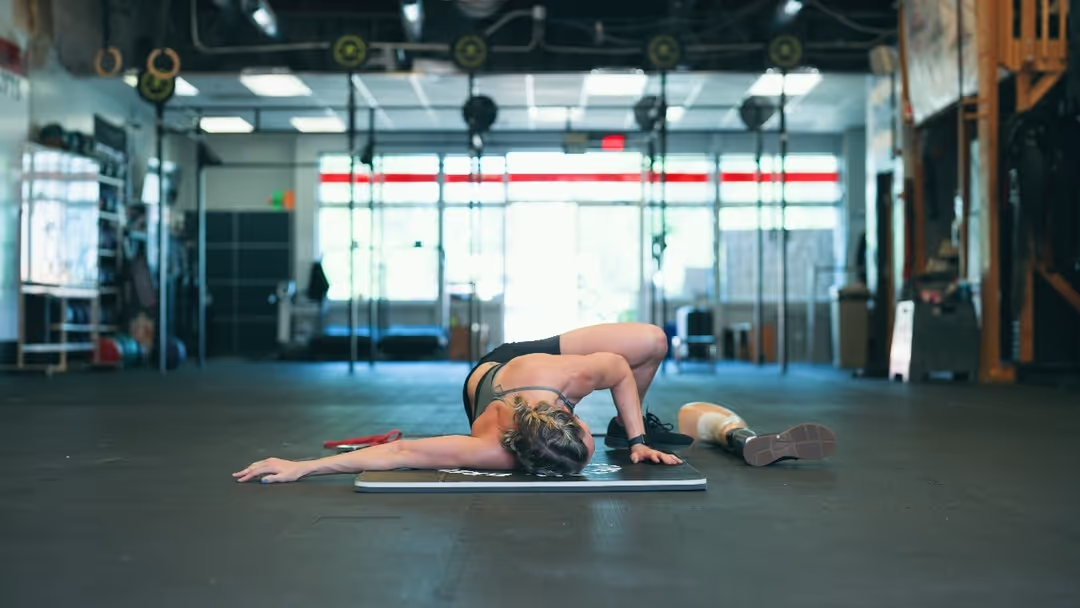
1. Increased Flexibility: The Gateway to Mobility
Upper body mobility exercises improve flexibility by stretching stiff muscles and opening tight joints. Over time, a lack of fitness can lead to a decrease in our:
- Range of motion
- Flexibility.
Upper body mobility exercises help keep your movements fluid. By keeping your joints, muscles, and connective tissue loose, you automatically increase your flexibility.
2. Less Chance of Injury: Move Better, Move Safer
Upper-body mobility exercises help reduce the risk of injury. When your muscles, joints, and connective tissue get stiff, it can be dangerous. It's not uncommon to see athletes sprain their muscles and joints by attempting movements that their bodies can't take.
This part is essential if you engage in activities that require lots of upper-body movement. If you use your shoulders a lot in whatever you do, chances are you run into trouble if those muscles around there are:
- Stiff
- Unyielding
Injury Prevention
By loosening up with these exercises, you're freeing up your upper body to enjoy its full range of motion with a reduced risk of injury.
3. Functional Use: Moves for Daily Life
For athletes and regular people, the upper body is a central part of our daily activities. We shake people, hug them, and sometimes carry stuff from the top shelf. Athletes involved in sports like:
- Boxing
- Gymnastics
- Fitness all use their upper bodies
Performing upper body workouts is therefore essential not only to keep yourself fit but also to help you go about your normal activities. It's quite a handy exercise.
4. Recovery: How Mobility Exercises Help You Bounce Back
Proper mobility exercises can aid in faster recovery by:
- Increasing blood flow
- Reducing muscle stiffness
- Promoting tissue repair
5. Enhanced Performance: Move Better, Perform Better
Improved mobility allows you to execute your movements more efficiently, generating more power and precision.
Top 25 Upper Body Mobility Exercises to Unlock Your Full Range of Motion
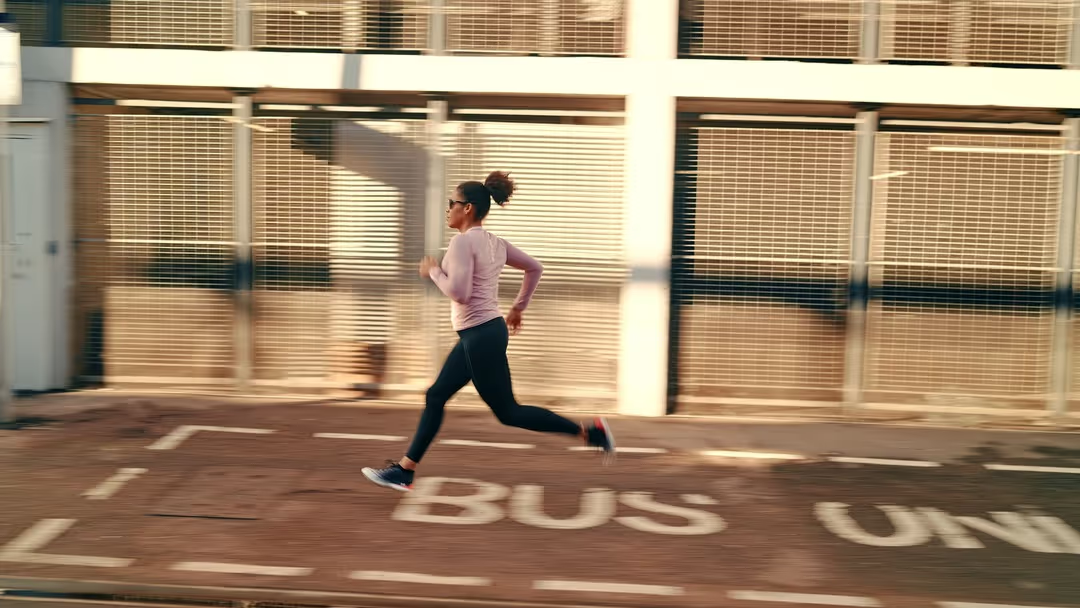
1. Upper Trapezius (Neck) Stretch
The upper trapezius neck stretch soothes tight neck and upper back muscles that can restrict mobility in your shoulders. To do this stretch:
- Start standing or sitting tall. Place one hand on your lower back, and the other on the opposite side of your head.
- Pull your head toward your shoulder, looking straight ahead, until you feel a stretch in your neck.
- Hold for at least 30 seconds, then repeat on the other side.
This move stretches multiple muscles in your neck, including the trapezius muscle, which extends down to your upper back.
2. Cross-Body Shoulder Stretch
The cross-body shoulder stretch targets the posterior shoulder to enhance flexibility and mobility. To perform this move:
- Start standing or sitting tall.
- Grab one arm above your elbow with your opposite hand and pull it across your body toward your chest until you feel a stretch in your shoulder.
- Make sure to keep your elbow below shoulder height.
- Hold for at least 30 seconds, then repeat on the other side.
A must-do on shoulder day, this stretch targets your deltoid muscle.
3. Overhead Triceps and Shoulder Stretch
The overhead triceps and shoulder stretch improve shoulder mobility and flexibility, emphasizing the triceps, which are often tight in weightlifters. To do this stretch:
Start standing or sitting tall.
- Bring one arm overhead and drop your forearm behind you, resting it on your back between your shoulder blades.
- With your other hand, grab right above your bent elbow and pull gently until you feel a stretch in your shoulder and the back of your arm. “You never want to pull on your elbow,” Giordano says.
- Keep your bicep close to your ear, and don’t force it past.
- Hold for at least 30 seconds, and then repeat on the other side.
You’ll feel this one primarily in the triceps muscle in your upper arm, but your shoulders and back will also get a little stretch.
4. Reclined Spinal Twist
The reclined spinal twist gently stretches your back muscles and promotes thoracic spine mobility. To perform this stretch:
- Lie face with your arms out to your sides, either straight or bent into the shape of a goal post (pictured above).
- Hug your knees into your chest.
- Then, drop both knees to one side as you twist your torso in the opposite direction.
- Try to keep your knees and hips in line as you draw them toward the floor, and keep your chest as square to the ceiling as possible.
- Keep your shoulders flat on the floor as you feel a stretch in your back.
- Hold for at least 30 seconds, then repeat on the other side.
This one just feels so good on your back. Move gently and don’t force a deeper twist if it hurts or irritates your lower back.
5. Biceps Stretch
The biceps stretch releases tight muscles in the front of your upper arm that can restrict your shoulder movement. To do this stretch:
- Sit on the floor with your feet flat and knees bent.
- Place your palms on the floor behind you with your fingers pointing away from your body.
- Keeping your hands in place, slowly slide your butt away from your hands until you feel a stretch in your biceps.
- Hold for at least 30 seconds.
There aren’t that many good ways to stretch your biceps, but this move gets it done—with a bonus chest and shoulder release, too. Keep your core engaged, and don’t let your back slump or arch.
6. Puppy Pose
Puppy pose (or Uttana Shishosana) is a fantastic yoga pose that stretches the upper back, shoulders, and chest while promoting thoracic spine mobility. To get into puppy pose:
- Start on all fours.
- Walk your arms forward a few inches and curl your toes under.
- Push your hips up and back halfway toward your heels.
- Push through the palms of your hands to keep your arms straight and engaged.
- Hold for at least 30 seconds.
A cross between down dog and child’s pose, the puppy pose focuses on the upper body and simultaneously gives you a plunging back and chest stretch.
7. Chest Stretch
The chest stretch opens tight muscles in the front of your body that can restrict shoulder movement. To do this stretch:
- Start standing tall, fingers interlocked behind you near your butt.
- Keeping your back straight and shoulder blades together, push your arms up until you feel the stretch in your pecs.
- Hold for at least 30 seconds.
It's so simple yet so good for stretching tight chest muscles. It’s also excellent for opening up the front of your body and counteracting the effects of sitting for long periods of time (and the inevitable slouching that comes with it).
8. World’s Greatest Stretch
The world’s greatest stretch is a dynamic move that targets muscles all over your body, with a special emphasis on improving mobility in the thoracic spine. To perform this stretch:
- Start by standing with your feet together.
- Take a big step forward with your right foot, so that you are in a staggered stance.
- Bend your right knee and drop into a lunge, keeping your left leg straight behind you with your toes on the ground, so you feel a stretch at the front of your left thigh.
- Place your left hand on the floor and twist your upper body to the right as you extend your right arm toward the ceiling. Hold for at least 30 seconds.
- Repeat on the other side.
This stretch does it all. It’s especially great for improving mobility in the mid-back, or thoracic spine.
9. Lying Pectoral Stretch
The lying pectoral stretch targets the pectoral muscles to improve flexibility and enhance shoulder mobility. To perform this stretch:
- Lie facedown with both arms extended to the sides so your body is in a T shape.
- Push off the ground with your left hand and slowly roll your weight onto your right side. You should feel the stretch in your right-side pectoral muscles.
As your mobility increases, you’ll be able to stretch further. Hold for at least 30 seconds and then repeat on the other side.
10. Child’s Pose
Child’s pose is a restful yoga position that stretches the back, chest, and shoulders while promoting relaxation. To get into this pose:
- Kneel on your mat with your knees wider than hip-width apart and your feet together behind you.
- Sit back on your heels (as best as you can) and fold forward, resting your belly on your thighs.
- Extend your arms out in front of you and rest your forehead on the floor.
- Gently press your chest and shoulders toward the floor to deepen the stretch.
- Hold for at least 30 seconds.
As you press your upper body toward the floor, you’ll feel a nice stretch in your shoulders and back, in addition to your hips and glutes.
11. Wrist Extension Stretch
- Start standing or sitting tall.
- Extend one arm forward in front of you at shoulder height or just below.
- Keep your extended arm straight and with your opposite hand, grab onto your fingers just above your palm.
- Pull on your hand to bend your wrist up, so your fingertips point toward the ceiling until you feel a stretch on the bottom of your forearm and wrist.
- Hold for at least 30 seconds and then repeat on the other side.
Improving flexibility and mobility in your wrist extensors can help you do push-ups, planks, and other moves where your wrist is extended and you’re putting weight into your hands, more comfortably.
12. Wrist Flexion Stretch
- Start standing or sitting tall.
- Extend one arm forward in front of you at shoulder height or just below.
- Keep your extended arm straight and with your opposite hand, press down on the top of your extended hand.
- Slowly bend your wrist down so your fingertips point toward the floor until you feel a stretch on your forearm and wrist.
- Hold for at least 30 seconds and then repeat on the other side.
This stretches the muscles in the top of the wrist, or the wrist flexors. You’ll also feel it in your forearms.
13. Cobra Pose
- Lie on your stomach with hands underneath your shoulders, elbows pointing straight behind you, palms flat on the ground, and big toes touching each other.
- Lightly press your feet into the floor. This is the starting position.
- Inhale, then exhale and pull your belly button in towards your spine.
- Inhale again and press through your palms to lift your chest off the floor.
- Pause when just a slight bend remains in your elbows; don’t straighten your arms completely.
Cobra Pose Benefits
Depending on your flexibility, at this point you may feel a stretch through your chest, the front of your shoulders, and/or the front of your hips. Keep your eyes slightly up at about a 30-degree angle. Your shoulders should be pulled down and away from your ears.
- Hold for 10 seconds, then return to the starting position.
- Repeat four to seven times. You may notice your spinal mobility increase as you do more reps.
Cobra pose stretches your chest muscles and extends the spine. You’ll also get a nice bonus hip stretch in there—which we could all use more of.
14. Downward Dog
- Place your hands on the ground so that your body is in a 4-point stance with your feet about shoulder-width apart.
- Push down through your palms and bring your hips up toward the sky.
- Your head should be between your elbows, looking away toward your knees.
- Hold for 30 seconds.
For an added calf stretch, alternate bending one knee while pressing your heel to the ground with the opposite foot.
15. Thoracic Rotation
- From a kneeling position, place your right hand on the floor with the elbow straightened.
- Place your left hand on your head so your elbow is at 90 degrees.
- Rotate your left elbow towards your right arm on the ground, touching elbow to elbow.
- Twist slowly upward until the elbow that is on your head is pointed skyward.
- Slight pause at top rotation and repeat the rotation for 30 seconds.
- Switch arms and repeat.
16. Chest Opener
This stretch is a combination of a chest and shoulder stretch.
- Stand with feet shoulder-width apart.
- Interlock your fingers together behind your lower back.
- Slowly pull both arms down and then drive the shoulders up a little bit.
- Hold for 30 seconds, feeling the stretch through your shoulders and chest.
- Release and shake out arms.
17. Shoulder Flossing with a Band
This exercise improves shoulder mobility and flexibility, particularly in the:
- Posterior shoulder
- Thoracic spine
How to Perform
- Stand with feet shoulder-width apart, holding a resistance band with both hands in front of you.
- Keeping arms straight, slowly raise the band overhead and behind your head, stretching the band as much as comfortable.
- Return to the starting position and repeat for 10-12 repetitions.
18. Thoracic Extension on Foam Rolle
This exercise enhances thoracic spine mobility. Without this mobility, more strain will be placed through the shoulder joint during activity.
How to Perform
- Sit on the floor with a foam roller positioned horizontally behind you at the level of your mid-back.
- Support your head with your hands, interlacing fingers behind your head.
- Point your elbows forward. Slowly lean back over the foam roller, extending your thoracic spine over the roller.
- Gently rock back and forth over the roller.
- Try inching up or down the foam roller until you find areas with more stiffness.
- Repeat 10-12 times when you find regions of stiffness.
19. Wall Slides
Wall slides strengthen the scapular stabilizers while improving shoulder mobility.
How to Perform
- Stand with your back against a wall, feet hip-width apart.
- Place your arms against the wall at shoulder height with elbows bent at 90 degrees.
- Slowly slide your arms upward, maintaining contact with the wall, until fully extended overhead.
If you cannot maintain contact with the wall, go to the point where your arms start to lift off, then return to the starting position. See if you can get progressively higher on each repetition. Repeat for 10-12 repetitions.
20. Dynamic Pec Stretch
This exercise stretches the pectoral muscles, which can:
- Become tight
- Restrict shoulder mobility
How to Perform
- Stand in a doorway with one foot in front of the other.
- Place one hand on the door frame at shoulder height.
- Lean forward, allowing your chest to open up and stretch the pectoral muscle.
- Repeat for 10-12 repetitions then switch sides.
21. Standing Arm Swings
Perhaps your favorite upper body mobility warmup, standing arm swings are quite effective for loosening up your shoulders. They target your shoulders specifically but are great for your general upper bodies today. It’s a simple workout.
- Start by standing upright with your arms down by your side.
- Engage your core, make your elbows straight and flex arms muscles, then swing both arms up over your head and bring them back to the starting position.
- Then rinse and repeat, until you feel like your shoulders could rotate 360°.
22. Shoulder Pass-Through
The shoulder pass-through is another effective workout for developing shoulder flexibility and increasing range of motion. Typically, you would need some kind of rod or stick to hold with both hands using an overhand grip.
- Stand upright while holding the stick across your body with your arms stretched out of your body and parallel to the floor.
- Once set, slowly raise the stick in your hands until it’s overhead.
- Go as far back as you can and hold that position for as long as you can.
- Ccome back down and go again.
23. High-To-Low Rows
One of my favorite things about these upper body mobility exercises is that most of them do not require any complicated movements. They’re just simple movements you can do even from home. High-to-low rows are another easy workout that helps with your upper body.
Resistance Band Row
It targets your upper back and thoracic muscles and helps provide extra stability for the shoulder joint. To effectively perform this workout, you need a resistance band.
Anchor the band around something higher than you, then kneel on one knee like you’re about to propose. Use your opposite hand to then pull the band down until your upper arm is parallel to your body.
24. Rotation With Dumbbell
If you engage heavily in overhead and throwing movements, rotation with a dumbbell is a great way to warm up. You can loosen up the muscles and joints in your shoulder and build not only flexibility but also strength. Rotation with a dumbbell is also easy to learn and master.
- Stand with your feet about shoulder length apart and hold a light dumbbell.
- Once set, raise your elbow up until it’s on the same line with your shoulder and your hand is facing downward.
- Now your starting position is set, the next step is to rotate your elbow until your hand now faces upward.
- Slowly go back to your starting position, and you can go again as many times as you’d like before switching hands and doing the same thing again.
25. Cat Camel
This drill is working on your arms, neck, and shoulder. Also called the cat and cow, it helps to stretch your abdomen and spine and improves your posture as well. To do this workout:
- Go down on all fours. Your hands should be in line with your shoulders as your legs with your hips.
- Take a deep breath, and as you exhale, engage your core and pull your spine upwards.
- At the same time, release the tension in your neck by pulling your chin down towards your chest. This is the first phase and should look somewhat like a cat stretching.
For the second part:
- Inhale and arch your back inwards, pushing your tailbone upwards this time while lifting your head.
- Of course, don’t keep any tension in your neck. This is now the cow part of the exercise. Keep moving back and forth between the two parts.
Pliability Yoga
Pliability offers a fresh take on yoga tailored for performance-oriented individuals and athletes. Our app features a vast library of high-quality videos designed to:
- Improve flexibility
- Aid recovery
- Reduce pain
- Enhance the range of motion
Pliability provides daily updated custom mobility programs for those interested in optimizing their health and fitness. It also includes a unique body-scanning feature to pinpoint mobility issues if you're feeling limited by pain or your ability to move.
Pliability Trial
Pliability aims to complement your existing fitness routine and help you move better. Sign up today for seven days absolutely for free on iPhone, iPad, Android, or our website to improve flexibility, aid recovery, reduce pain, and enhance the range of motion with our mobility app.
Related Reading
- Golf Mobility Exercises
- Mobility Exercises For Runners
- Can You Over Stretch
- Squat Mobility Exercises
- Functional Mobility Exercises
- Why Stretching Is Important
- Foot Mobility Exercises
- Arm Mobility Exercises
- Hamstring Mobility Exercises
- Elbow Mobility Exercises
- Rotator Cuff Mobility Exercises
- Bed Mobility Exercises
- What Are Mobility Exercises
- Full Body Mobility Exercises
7 Best Tools and Equipment for Upper Body Mobility

1. Resistance Bands: Your Travel-Friendly Upper Body Mobility Tool
Resistance bands are long, flat, rubbery ribbons designed for resistance training. They’re inexpensive, you can take them with you anywhere, and they serve multiple purposes. Even if you’re not in physical therapy, they’re useful tools for any strengthening workout. In most cases, exercise bands come in a set with multiple strength levels.
Resistance Band Training
You can start with the lightest band when you first begin your regimen. As you recover, you can use a heavier band or combine bands together. Different strength levels can also be used for different types of exercises.
Physical therapists use resistance bands to target specific muscles that can be difficult to isolate. One good example is the rotator cuff, which is tough to exercise with other methods.
2. Stretching Straps: A Handy Upper Body Mobility Accessory
A stretching strap doesn’t actually stretch. Instead, it’s designed to help a person stretch. The affordable nylon strap looks almost like a dog leash, except it’s formed into multiple loops. This design allows a person to perform exercises that would normally require a partner.
You can wrap the strap around your foot, then extend your leg and pull it towards you with the strap. Physical therapy almost always involves stretching, and a stretching strap can be a huge help. It is always a great idea to increase your range of movement in a safe and functional way.
3. Exercise Balls: A Versatile Mobility Training Tool
Exercise balls, sometimes called physio balls, are one of the most versatile physical therapy tools. They can be used for stretching, building core strength, and even improving posture. This ball can also be used to improve balance. Since these balls are inflatable, they’re more portable than they appear.
Exercise balls are available in multiple sizes. A smaller ball will provide more of a challenge for balancing but takes up less space in your house. A large exercise ball will be less challenging to use but can clutter up the living room.
4. Foam Rollers: Essential for Self-Myofascial Release
Foam rollers are cylindrical pieces of foam that can be used in many ways. A person can use them to slide up and down to stretch out their back, iliotibial band (outside hip), and calves to increase muscle length.
They’re available in various sizes and densities to provide different benefits. Some even have knobs or ridges to provide a massage. In a physical therapy context, foam rollers are used for many purposes, including:
- Regaining mobility
- Exercising core muscles
5. Cuff Weights: Add Resistance to Upper Body Mobility Exercises
Cuff weights are weighted bands that are strapped to wrists or ankles. They’re designed:
- To make exercises more challenging
- To help build strength
As physical therapy tools, they’re particularly useful for people with arthritis or other grip issues. Since they attach directly to your body, you don’t have to hold onto them.
6. Balance Pads: Improve Balance for Upper Body Mobility
Balance pads are thick pads that are made from dense foam. Since the foam condenses under your weight, the surface is constantly shifting, and a person needs to engage multiple muscle groups in order to remain stable.
As a result, they’re a powerful tool for improving balance and stability. When using a balance pad, it’s important to be next to a stable surface to catch yourself if you start to fall. You should also avoid using them on porcelain tile or other slick surfaces. The pad might slip around and cause you to fall.
7. PVC Pipes: Practicing Upper Body Mobility Movements
PVC pipes have multiple uses for mobility and technique practice. Mobility Movement: PVC pipes can be used like a stick roller when you want a harder surface than a foam roller or some of the small balls on a stick roller.
Also, performing Overhead Squats with a pipe can help correct issues in the shoulders, hips and ankles. Technique Movement: Almost anything you can do with a barbell you can practice with a PVC pipe:
- Back Squat
- Overhead Squat
- Snatch
- Jerk
- Split Jerk
- Goodmornings
- RDLs
Tips for Safely Incorporating Mobility Into Your Routine
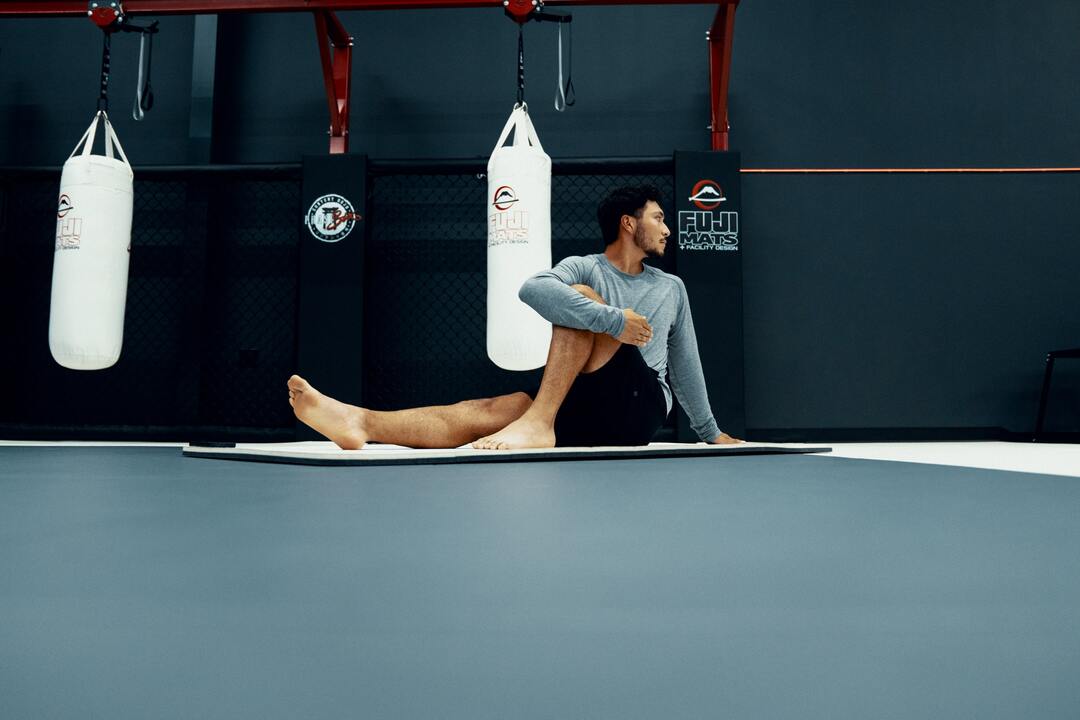
Consult Your Healthcare Provider to Address Pain and Mobility Issues Before Exercising
Experiencing pain or a limited range of motion can signal underlying issues that may need medical intervention. Before integrating any mobility exercises into your workout routine, consult your healthcare provider or physical therapist. Getting cleared for exercise and receiving any necessary medical treatments first will help ensure that you don’t exacerbate any injuries.
Start Slow and Progress Gradually
Once you’ve been cleared for exercise, start to incorporate a few daily stretches and exercises to address your mobility issue. Progress slowly, and let pain be your guide. Mobility work can be uncomfortable–especially if you’re starting with a limited range of motion or impingement–but it should be tolerable.
The goal is to improve your flexibility and range of motion, not to create more pain or exacerbate existing injuries. Your physical therapist is the best resource for developing a routine to help you progress but not overdo it.
Be Consistent
Consistent mobility work is crucial as we age because our sedentary lifestyles often lead to:
- A limited range of motion in your joints
- Tight and weak muscles
- Poor movement quality
Regularly incorporating upper body mobility drills into your exercise warm-ups can help keep your joints happy.
Work With An Expert
If you have any concerns, work with an expert to identify any mobility issues and create a daily protocol to address them. If you don’t have any existing problems, you can prevent them from developing by including upper body mobility drills regularly in your exercise warm-ups to keep your joints happy.
Improve Your Flexibility with Our Mobility App Today | Get 7 Days for Free on Any Platform
Pliability offers a fresh take on yoga tailored for performance-oriented individuals and athletes. Our app features a vast library of high-quality videos designed to:
- Improve flexibility
- Aid recovery
- Reduce pain
- Enhance the range of motion
Pliability provides daily updated custom mobility programs for those interested in optimizing their health and fitness. It also includes a unique body-scanning feature to pinpoint mobility issues if you're feeling limited by pain or your ability to move.
Pliability Trial
Pliability aims to complement your existing fitness routine and help you move better. Sign up today for seven days absolutely for free on iPhone, iPad, Android, or our website to improve flexibility, aid recovery, reduce pain, and enhance the range of motion with our mobility app.
Related Reading
- Gowod Vs Pliability
- Tennis Mobility Exercises
- Weighted Mobility Exercises
- Cervical Mobility Exercises
- Resistance Band Mobility Exercises
- Rib Mobility Exercises
- Glute Mobility Exercises
- Best Yoga App
- Free Apps For Stretching And Flexibility
- Mobility Apps
- Stretching Apps
- Chest Mobility Exercises
- Glute Stretches
- Gluteus Medius Stretch
- Glute Stretch
- Cervical Radiculopathy Exercises

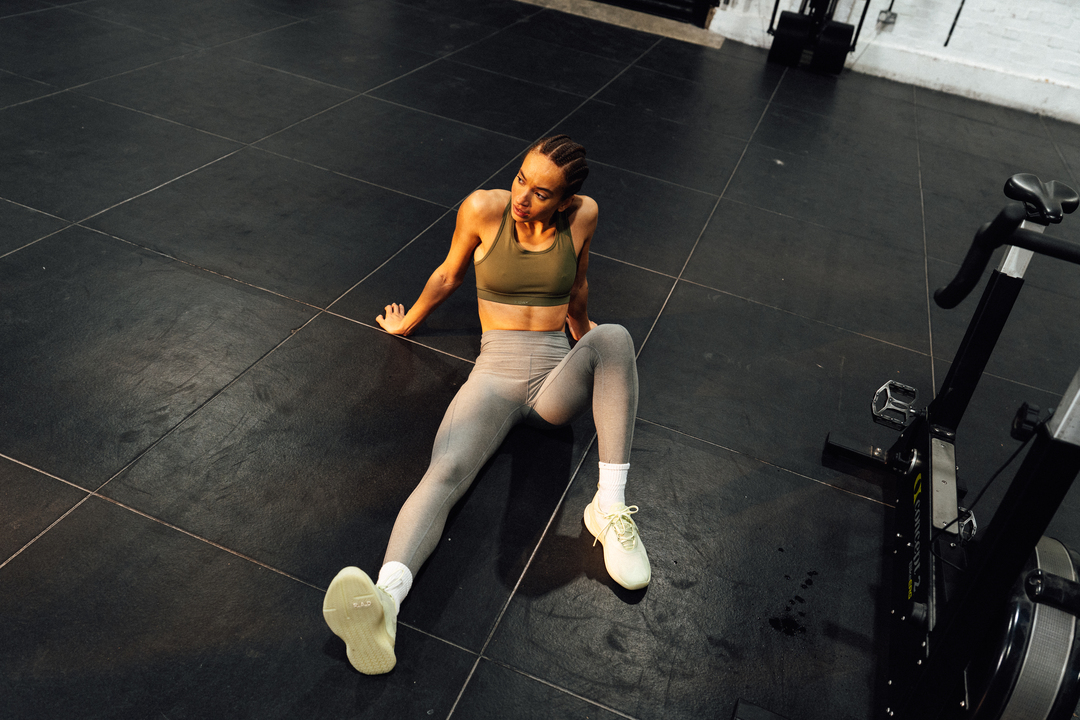

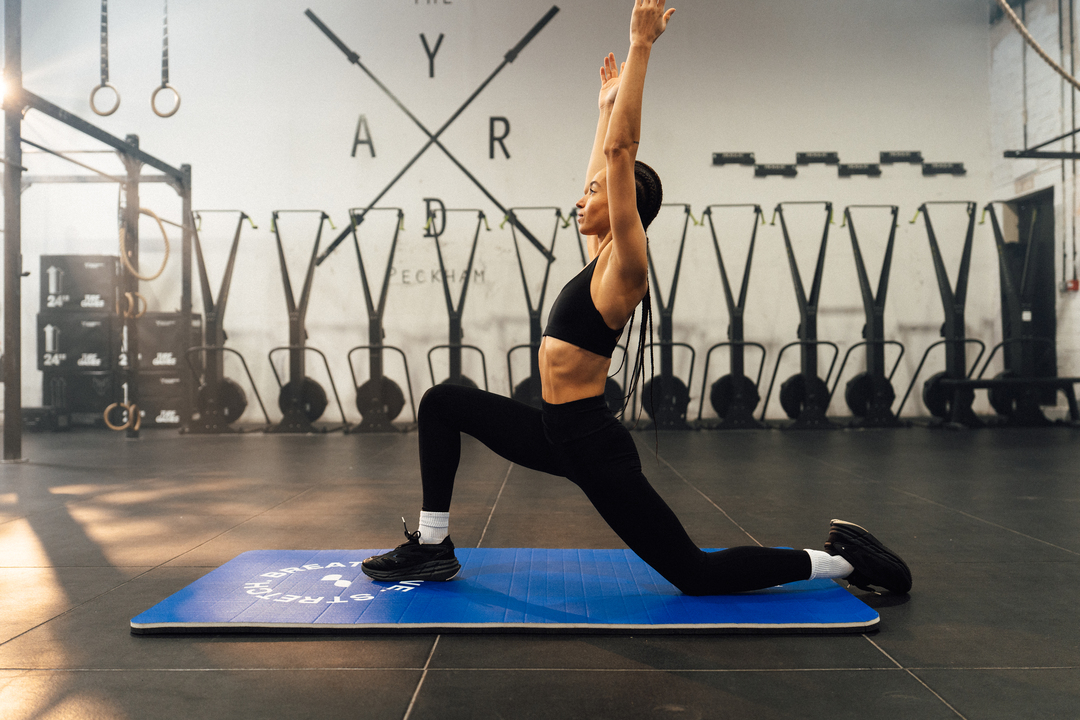
.jpg)
.jpg)


